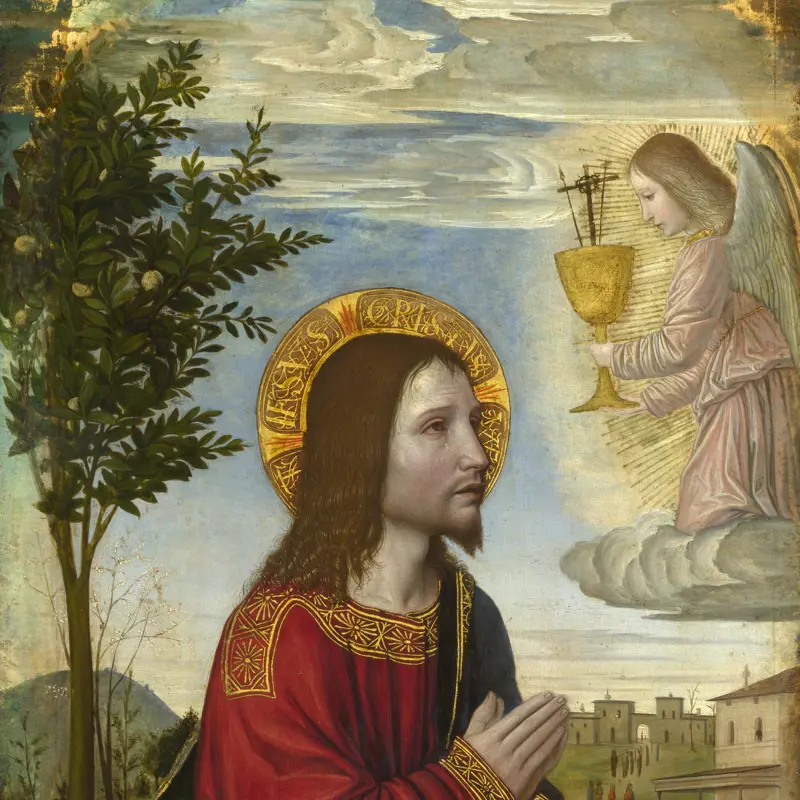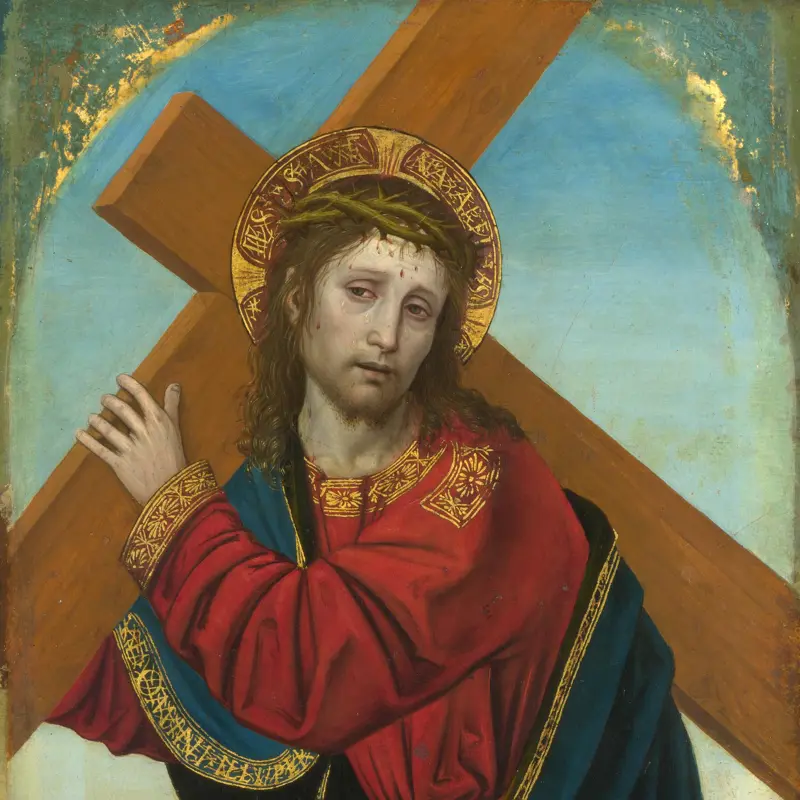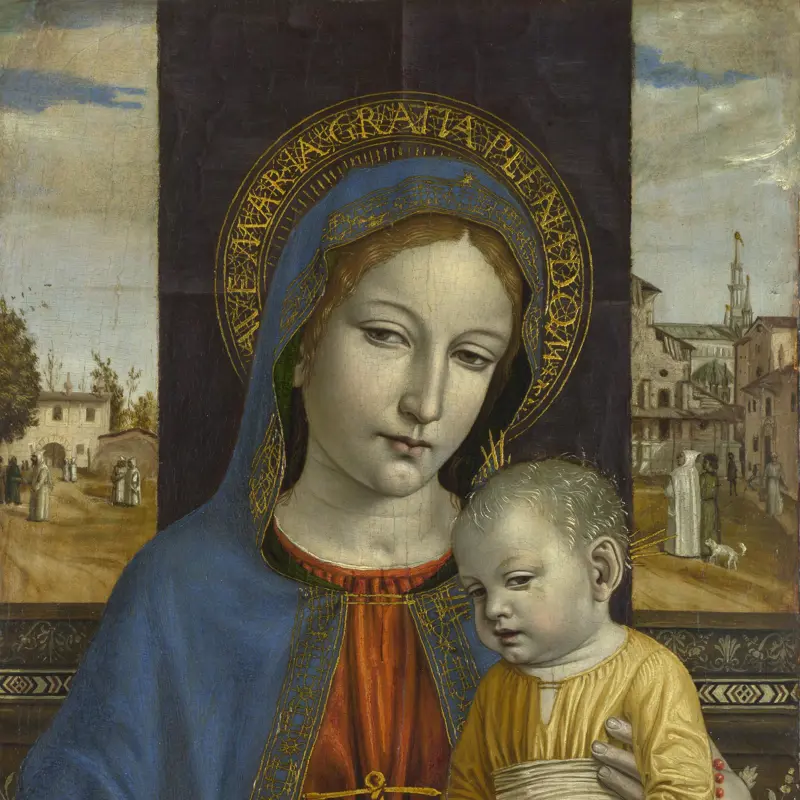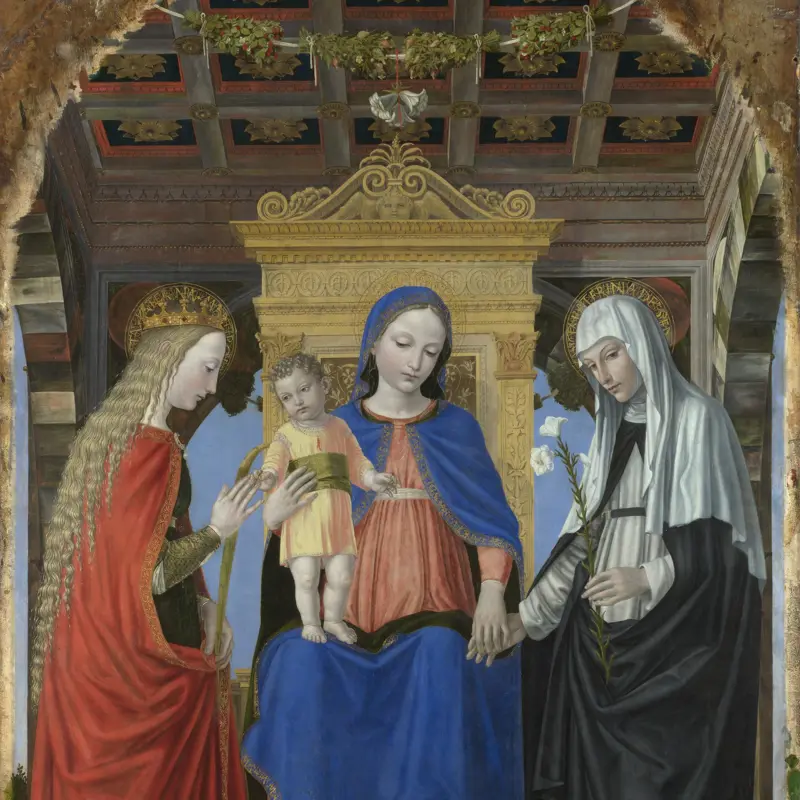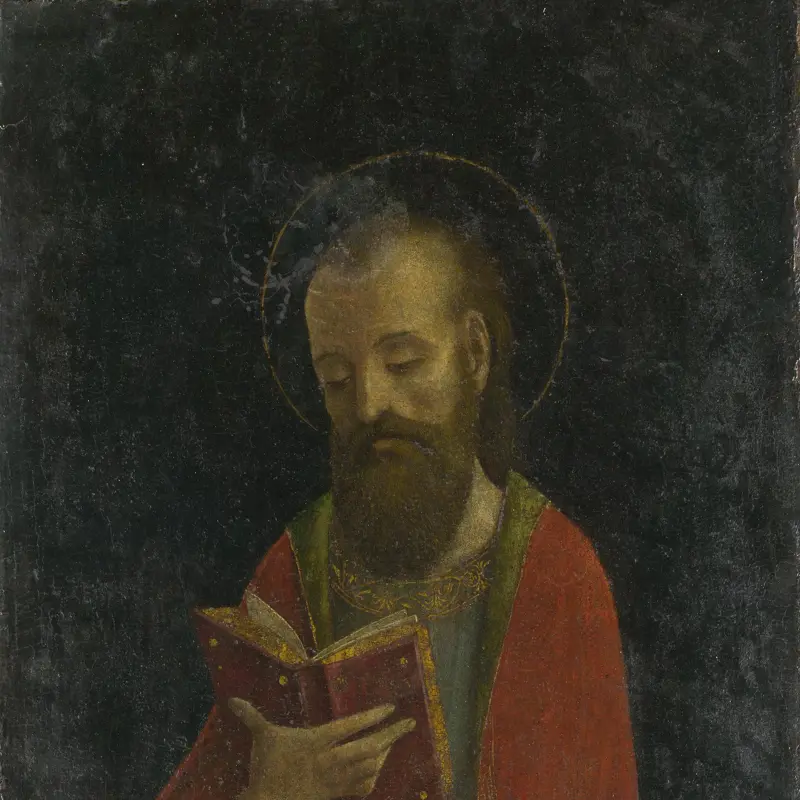Ambrogio Bergognone, 'Christ carrying the Cross', probably 1501
About the work
Overview
Christ, barefoot and weeping but dressed in rich red and blue, is bent under the weight of the Cross. The spikes of the crown of thorns dig into his flesh, and crystal tears drip down his cheeks. He is dragging the Cross to his own crucifixion.
The setting is not first-century Palestine, but Renaissance Italy. In the background is a walled town on the edge of a river or lake. It is clearly a fine day: the skies are blue, people stroll on the path by the water and washing has been hung to dry over the balcony.
This is one of a pair of small panels by the Milanese artist Ambrogio Bergognone. They probably originally formed part of a multi-panelled altarpiece and an inscription in the bottom left corner of this panel includes the date 1501.
Key facts
Details
- Full title
- Christ carrying the Cross
- Artist
- Ambrogio Bergognone
- Artist dates
- Active 1481, died 1523?
- Part of the series
- Two Panels from an Altarpiece
- Date made
- Probably 1501
- Medium and support
- Oil on wood
- Dimensions
- 99.7 × 45.1 cm
- Inscription summary
- Dated
- Acquisition credit
- Bought, 1879
- Inventory number
- NG1077.2
- Location
- Room 10
- Collection
- Main Collection
Provenance
Additional information
Text extracted from the ‘Provenance’ section of the catalogue entry in Martin Davies, ‘National Gallery Catalogues: The Earlier Italian Schools’, London 1986; for further information, see the full catalogue entry.
Bibliography
-
1951Davies, Martin, National Gallery Catalogues: The Earlier Italian Schools, London 1951
-
1986Davies, Martin, National Gallery Catalogues: The Earlier Italian Schools, revised edn, London 1986
-
2001
C. Baker and T. Henry, The National Gallery: Complete Illustrated Catalogue, London 2001
About this record
If you know more about this work or have spotted an error, please contact us. Please note that exhibition histories are listed from 2009 onwards. Bibliographies may not be complete; more comprehensive information is available in the National Gallery Library.
Images
About the series: Two Panels from an Altarpiece
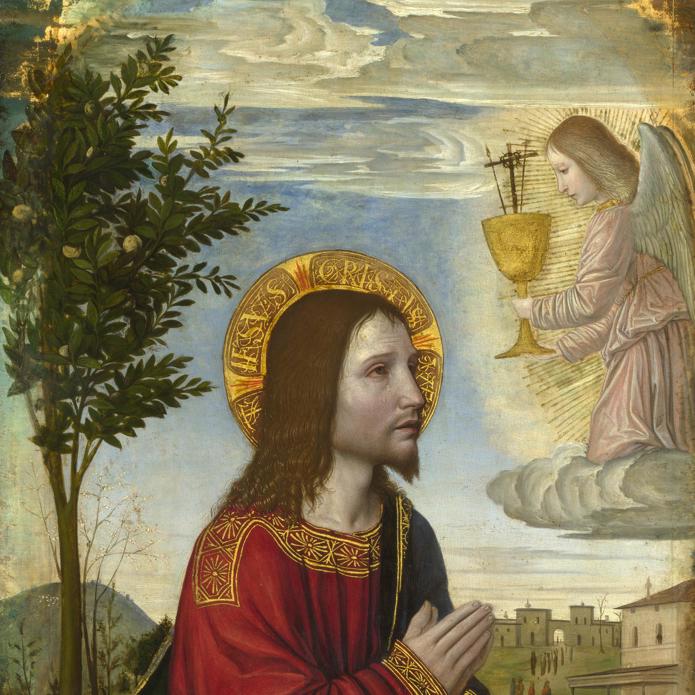
Overview
These two paintings of different episodes of the Passion (Christ’s torture and death) were once part of a triptych (a painting in three parts), along with The Virgin and Child with Two Angels, which is also in the National Gallery’s collection.
The three were not, however, made to go together. The two smaller panels of Christ may well have formed part of a multi-panelled altarpiece made by Ambrogio Bergognone in around 1501 (the date on one panel); the picture of the Virgin and Child is earlier, perhaps from the late 1480s, and is probably by Ambrogio’s brother, Bernardino.
Ambrogio Bergognone ran one of the leading painting workshops in Lombardy in the late fifteenth century, and his brother worked closely with him.

